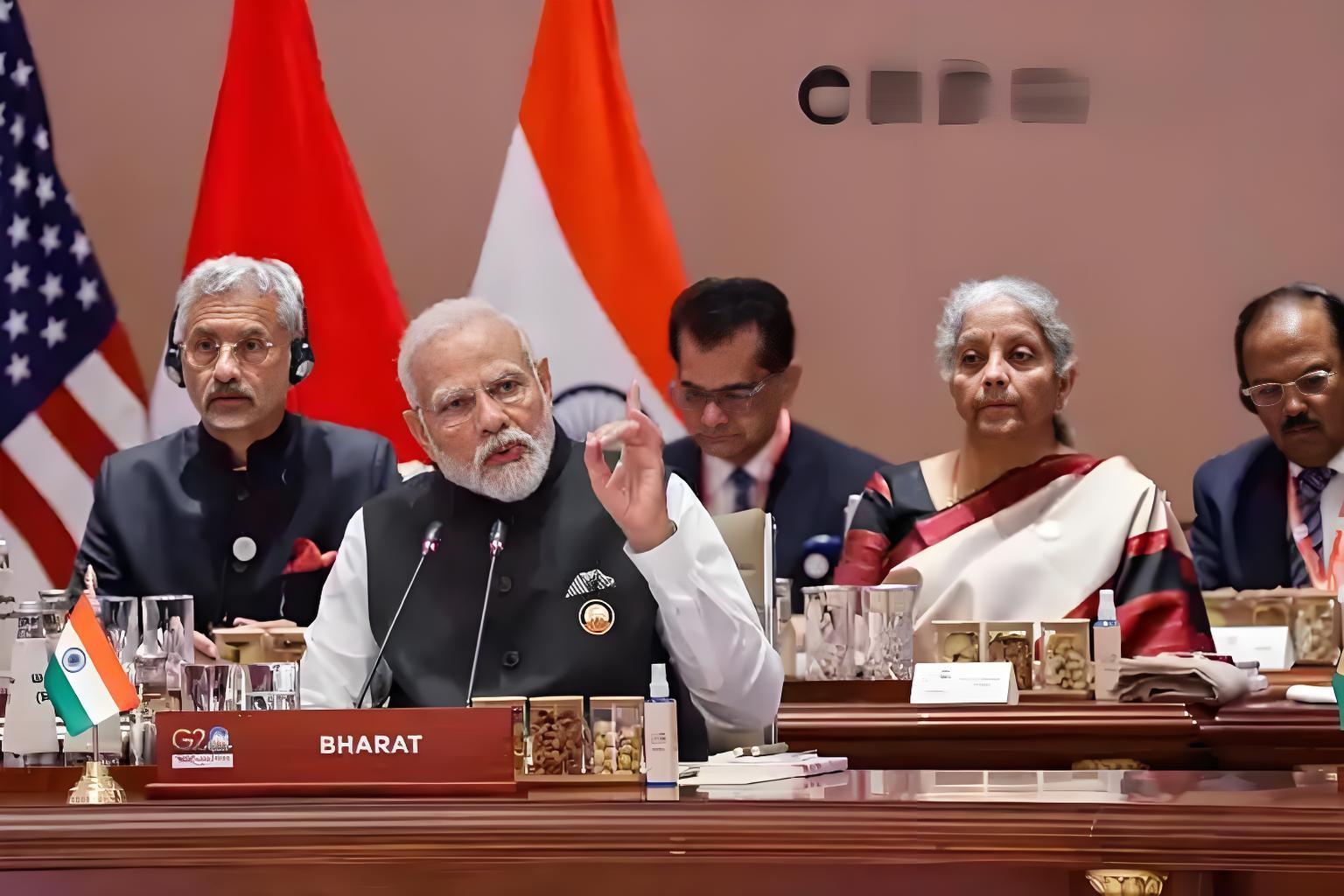
At 0:00 on August 27th, Eastern Time of the United States, the 50% tariff imposed by the United States on Indian goods was officially implemented. According to the announcement of the US Department of Homeland Security, this tax covers all imported consumer products from India. It is not only a "broad strike" by the US against countries that maintain trade relations with Russia, but also has drawn global attention to the trade pattern between the US and India, the resilience of the Indian economy and the reconstruction of its industrial chain.
This 50% tariff is the result of the superposition of two rounds of policies. On July 31, the United States imposed a 25% tariff on 12 billion US dollars worth of Indian goods exported to the US on the grounds that "India did not cooperate in reducing trade with Russia". On August 6th, an additional 25% tax was imposed on India's continuous import of Russian oil, bringing the final tax rate to 50%. The United States has attempted to force India to compromise and protect its domestic industries through trade pressure, but unilateral policies have had an impact on global trade rules and the stability of industrial chains.
From the perspective of trade data, the United States is India's third-largest trading partner. In 2024, India's exports to the United States reached 78 billion US dollars, accounting for 18.2% of its total exports and 2.3% of its GDP. This tariff covers 66% of India's exports to the United States, involving core industries such as textiles, gemstones and jewelry, and auto parts. The impact has gradually emerged.
At the industrial level, labor-intensive industries are the first to be affected. India's textile exports to the United States account for 22%, with exports expected to reach 9.2 billion US dollars in 2024. Tariffs will increase costs by 4.6 billion US dollars, and 30% of small and medium-sized textile enterprises may lose orders, affecting 2 million jobs. The gemstone and jewelry industry is facing a more severe situation. The US market accounts for 45% of its exports (13.5 billion US dollars in 2024). Tariffs have led to a 35% to 40% increase in diamond prices, while orders have dropped by 15% month-on-month. If tariffs persist for six months, the industry's output value may shrink by 20%. In the automotive parts sector, the United States is India's largest export market, with exports expected to reach 6.6 billion US dollars in 2024, including 3 billion US dollars for commercial vehicle parts. Tariffs have reduced the competitiveness of Indian products by 38%. Automakers such as General Motors and Ford have turned to purchasing products from North American suppliers. It is estimated that India's exports in this category will decline by 25% to 30% in 2025. It affects the revenue of 1,200 local enterprises.
At the economic growth level, multiple institutions have issued warnings about the drag of tariffs on India's GDP. Moody's pointed out that the 50% tariff would reduce India's export growth rate by 2.1 percentage points and drag down GDP growth by 0.3 to 0.5 percentage points. If no trade agreement is reached within three months, India's GDP growth rate for the current fiscal year may fall below 6% to 5.8%. Although the Indian economy is centered on consumption (accounting for 58% of GDP) and the proportion of exports to the United States is low, the export industry is related to the employment of 120 million people. The decline of the industry may be passed on to the consumption end, forming a negative cycle.
In response to the impact, the Indian government promptly introduced countermeasures. In terms of industrial support, the Reserve Bank of India has introduced 500 billion rupees (approximately 6 billion US dollars) in low-interest loans, with the interest rate reduced by 1.5 percentage points, covering key industries. The Ministry of Finance has suspended import duties on raw materials for export industries. Import duties on cotton and rough diamonds have been reduced to zero, which is expected to cut costs by 8 billion US dollars. In terms of market diversification, India is accelerating free trade negotiations with ASEAN, the UK, Australia and other countries. The negotiations with ASEAN are drawing to a close. If an agreement is reached, textiles and other products can enter ASEAN at zero tariffs, making up for 30% of the losses in exports to the United States. At the same time, we will explore emerging markets. In the first half of 2025, exports to China and Brazil will increase by 12% and 18% respectively. In terms of exchange rate and fiscal coordination, the Reserve Bank of India sold 25 billion US dollars of foreign exchange reserves, stabilizing the rupee's exchange rate against the US dollar within the range of 83 to 84. The government plans to raise the export rebate for the fiscal year 2025 from 1.2 trillion rupees to 1.5 trillion rupees to ease the tax burden on enterprises.
The additional tariffs imposed by the United States have also triggered a chain reaction in the global industrial chain. In the textile sector, India is the world's third-largest exporter of textiles, providing OEM services for brands such as Zara and H&M. Tariffs have increased procurement costs by 25% to 30%. Some enterprises have shifted their orders to Bangladesh and Vietnam. In August, Bangladesh's orders from the United States increased by 22% year-on-year. The textile chain is showing a trend of "shifting from India to Southeast Asia". In the automotive sector, India is a significant component base. American automakers rely on imports from India for key components. Tariffs have raised the costs of American automakers by 5% to 8%, and the prices of commercial vehicles may increase by 3% to 4%, exacerbating inflation in the United States. Indian enterprises have set up factories in Mexico, using "Indian-made parts + Mexican assembly for export" to avoid taxes. The automotive chain is now undergoing "regional reorganization". At the level of trade rules, the unilateral tariffs imposed by the United States violate the most-favored-nation treatment principle of the WTO. India has already filed a lawsuit. If the WTO rules that the United States has violated the regulations, it may trigger more countries to retaliate and intensify global trade frictions.
The current trade negotiations between the United States and India have entered a critical period. The negotiations originally scheduled for August in New Delhi have been cancelled, but communication has not been interrupted. The US side demands that India reduce its oil imports from Russia (accounting for 28%) and open up its agricultural and digital markets. India insists on the premise of tariff reduction and market guarantee, and refuses to compromise on trade with Russia. If a phased agreement is reached within three months, the tariff may be reduced to below 25%. If it breaks down, the US may expand the scope of tariffs, and India may retaliate by imposing additional tariffs on US agricultural and energy products. In the long term, this incident has exposed the risk of India's economic dependence on foreign countries and pushed it towards a transformation driven by both domestic demand and exports. At the same time, the trend of regionalization and diversification of the global industrial chain is strengthening. Enterprises may disperse their supply chains, which also provides opportunities for India to increase the added value of its industrial chain, optimize the business environment and attract foreign investment.

Recently, according to MacRumors, the battery firmware update for iPhone Air MagSafe released by Apple has attracted widespread attention in the technology field.
Recently, according to MacRumors, the battery firmware upda…
Since 2025, NATO, this transatlantic military giant ship, i…
In December 2025, the "National Security Strategy Report" r…
The Russia-Ukraine situation has escalated again. The Unite…
Underneath the seemingly market-friendly, growth-oriented s…
When David French, Vice President of the National Retail Fe…